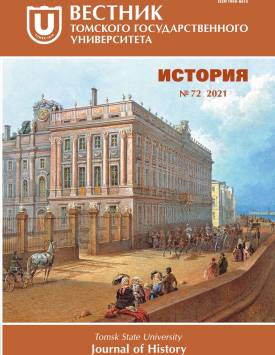Underside of the good: pupils suicide and reformation of the Russian education system in the early 20th century
The article formulates and justifies the hypothesis of the connection between the «epidemic of school suicide» in the early 20th century with the transformations of Russian educational structures. Historians (A.B. Lyarsky, I.V. Sinova, N.S. Vatnik, S.A. Zavrazhin, S.I. Belentsov) connect «epidemic of school suicide» with crisis of an education system and/or the Russian Empire. The establishment of the public education system on a nationwide scale has increased the value of education in society and made it the right, duty and main activity of the younger generation. It was recognized as an important social elevator, grades and exams from ordinary regulators of the educational process turned into social risks, influencing the future of children and creating a predisposition to suicidal behavior. Along with the mass educational school, the emerging vocational education became increasingly important. With the erosion of social boundaries, the social structure of the Russian Empire began to be based on the institutionalization of professions, which began to be perceived as a criterion of social stratification and a factor of social mobility. Getting primary, secondary and vocational education in the early 20th century became the most important career resource that gave an advantage on the labor market. These epochal shifts, sharply increasing the importance of education, turned it into a powerful suicidal factor. Connection between the anti-vital experiences of the youth and the educational institutions caused serious concern in Russian society (G.V. Hlopin, N.M. Popov, V.A. Bernadsky, M.Ya. Fenomenov). However, parents and even experts, pediatricians and pedagogical innovators, attributed all the harm from these destructive manifestations to the inertness and retrogradeness of the domestic school system, demanding its reformation. They fought against the «old» school for the «new» one. While increasing access to education and introducing universal education, increasing the value of knowledge and developing the vocational education system are markers of modernization, which traditionalist criticism finds guilty for the emergence of the suicide problem in general. The rise in student suicidal activity that took the form of an «epidemic of school suicide» could be associated with attempts (or the initial stages) of the educational and social reforms took place at the beginning of the 20th century and interrupted by the era of wars and revolutions.
Keywords
Russian Empire, social anxiety, social elevator, value, education system, juvenile suicideAuthors
| Name | Organization | |
| Golikova Svetlana V. | Institute of History and Archaeology, Ural Branch of the Russian Academy of Sciences | avokilog@mail.ru |
References

Underside of the good: pupils suicide and reformation of the Russian education system in the early 20th century | Tomsk State University Journal of History. 2021. № 72. DOI: 10.17223/19988613/72/3
